Click to view all Air Racing and Records articles starting with the most recent.
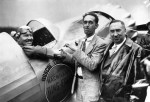 Air Racing Was Like This – by Roscoe Turner - Roscoe Turner was the preeminent aerial showman of the 1930s, and perhaps of all time. In this article, he provides some insight as to what it was like to compete in an air race.
Air Racing Was Like This – by Roscoe Turner - Roscoe Turner was the preeminent aerial showman of the 1930s, and perhaps of all time. In this article, he provides some insight as to what it was like to compete in an air race.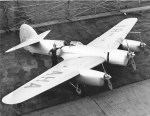 Bellanca 28-92 Trimotor - The Bellanca 28-92 was designed as a long-distance aircraft. Although it participated in two Bendix Trophy races, the aircraft never found an enthusiastic owner or the support it needed.
Bellanca 28-92 Trimotor - The Bellanca 28-92 was designed as a long-distance aircraft. Although it participated in two Bendix Trophy races, the aircraft never found an enthusiastic owner or the support it needed. Bugatti Model 100P Racer - The Bugatti 100P was designed to set the 3 km absolute world speed record for landplanes and was arguably one of the most beautiful aircraft ever built. WWII prevented the aircraft from being finished.
Bugatti Model 100P Racer - The Bugatti 100P was designed to set the 3 km absolute world speed record for landplanes and was arguably one of the most beautiful aircraft ever built. WWII prevented the aircraft from being finished. Curtiss XF6C-6 Page Navy Racer - Based on a standard Curtiss F6C-3 Hawk biplane, the XF6C-6 monoplane was specially designed as a pylon air racer. Flown by Capt. Arthur Page, the aircraft had a commanding lead when it crashed during its first race.
Curtiss XF6C-6 Page Navy Racer - Based on a standard Curtiss F6C-3 Hawk biplane, the XF6C-6 monoplane was specially designed as a pylon air racer. Flown by Capt. Arthur Page, the aircraft had a commanding lead when it crashed during its first race.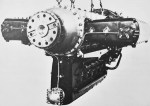 Farman 18T 18-Cylinder Aircraft Engine - The Farman 18T was a uniquely shaped aircraft engine intended to power a Schneider Trophy racer built by Bernard. The aircraft never materialized, nor did any challenger from France for the 1931 race.
Farman 18T 18-Cylinder Aircraft Engine - The Farman 18T was a uniquely shaped aircraft engine intended to power a Schneider Trophy racer built by Bernard. The aircraft never materialized, nor did any challenger from France for the 1931 race. FIAT AS.6 Aircraft Engine (for the MC.72) - The FIAT AS.6 engine ultimately produced 3,100 hp (2,312 kW) and was used to propel the MC.72 to 440.682 mph (709.209 km/h). But development of the 24-cylinder engine was plagued with issues and cost several lives.
FIAT AS.6 Aircraft Engine (for the MC.72) - The FIAT AS.6 engine ultimately produced 3,100 hp (2,312 kW) and was used to propel the MC.72 to 440.682 mph (709.209 km/h). But development of the 24-cylinder engine was plagued with issues and cost several lives. FIAT AS.8 Engine and CMASA CS.15 Racer - Powered by the 2,250 hp (1,678 kW) FIAT AS.8 V-16 engine, the Italian CMASA CS.15 racer was intended to set a new world speed record for aircraft, but WWII prevented the aircraft from being completed.
FIAT AS.8 Engine and CMASA CS.15 Racer - Powered by the 2,250 hp (1,678 kW) FIAT AS.8 V-16 engine, the Italian CMASA CS.15 racer was intended to set a new world speed record for aircraft, but WWII prevented the aircraft from being completed.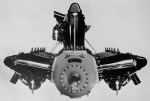 Hispano-Suiza 18R and 18Sb Aircraft Engines - The Hispano-Suiza 18R and 18Sb were a series of high-performance W-18 aircraft engines. The engines displaced 3,300 cu in (54.1 L) but never developed the intended 1,680 hp (1,253 kW).
Hispano-Suiza 18R and 18Sb Aircraft Engines - The Hispano-Suiza 18R and 18Sb were a series of high-performance W-18 aircraft engines. The engines displaced 3,300 cu in (54.1 L) but never developed the intended 1,680 hp (1,253 kW). Kawasaki Ki-78 (KEN III) - The Kawasaki Ki-78 was a high-speed research aircraft and possible world speed record contender. First flown in 1942, the aircraft experienced numerous difficulties, and its performance did not live up to expectations.
Kawasaki Ki-78 (KEN III) - The Kawasaki Ki-78 was a high-speed research aircraft and possible world speed record contender. First flown in 1942, the aircraft experienced numerous difficulties, and its performance did not live up to expectations.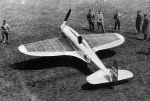 Kellner-Béchereau 28VD Air Racer - The Kellner-Béchereau 28VD was built to compete in the 1933 Coupe Deutsch de la Meurthe race. A mechanical issue on a qualification flight resulted in a forced landing that destroyed the aircraft.
Kellner-Béchereau 28VD Air Racer - The Kellner-Béchereau 28VD was built to compete in the 1933 Coupe Deutsch de la Meurthe race. A mechanical issue on a qualification flight resulted in a forced landing that destroyed the aircraft.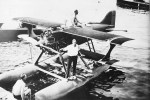 Kirkham-Williams Seaplane Racer (1927) - The Kirkham-Williams Racer was a privately funded aircraft built to compete in the 1927 Schneider Trophy Contest. Piloted by Lt. Al Williams, developmental issues prevented the racer from competing.
Kirkham-Williams Seaplane Racer (1927) - The Kirkham-Williams Racer was a privately funded aircraft built to compete in the 1927 Schneider Trophy Contest. Piloted by Lt. Al Williams, developmental issues prevented the racer from competing. Napier-Heston Racer - The Napier-Heston Racer was built to set the 3 km absolute world speed record for landplanes. The Sabre-powered aircraft was damaged during its first flight and was never repaired, as WWII altered priorities.
Napier-Heston Racer - The Napier-Heston Racer was built to set the 3 km absolute world speed record for landplanes. The Sabre-powered aircraft was damaged during its first flight and was never repaired, as WWII altered priorities. Navy-Wright NW-1 and NW-2 Racers - The Navy-Wright racers are unusual in that different versions of the aircraft competed in landplane and seaplane events in the early 1920s. The aircraft were fast, but their Wright T-2 engines proved to be very unreliable.
Navy-Wright NW-1 and NW-2 Racers - The Navy-Wright racers are unusual in that different versions of the aircraft competed in landplane and seaplane events in the early 1920s. The aircraft were fast, but their Wright T-2 engines proved to be very unreliable.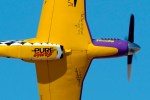 One Second in the Life of a Racer – by Tom Fey - Tom Fey breaks down the inner workings of a race-prepped Merlin engine as it powers a modified P-51 Mustang to 480 mph around the course at the Reno Air Races.
One Second in the Life of a Racer – by Tom Fey - Tom Fey breaks down the inner workings of a race-prepped Merlin engine as it powers a modified P-51 Mustang to 480 mph around the course at the Reno Air Races. One Second on the Course with Dreadnought – by Tom Fey - Tom Fey breaks down the inner workings of the R-4360 engine installed in the Sanders Family’s air racer Dreadnought as it provides race-power on the course at the Reno Air Races.
One Second on the Course with Dreadnought – by Tom Fey - Tom Fey breaks down the inner workings of the R-4360 engine installed in the Sanders Family’s air racer Dreadnought as it provides race-power on the course at the Reno Air Races.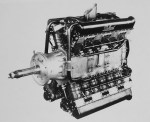 Packard X-2775 24-Cylinder Aircraft Engine - The Packard X-2775 (1A-2775) X-24 was a light, compact, and powerful aircraft engine. Trouble with the Kirkham-Williams and Williams Mercury Racers prevented the engine from proving itself.
Packard X-2775 24-Cylinder Aircraft Engine - The Packard X-2775 (1A-2775) X-24 was a light, compact, and powerful aircraft engine. Trouble with the Kirkham-Williams and Williams Mercury Racers prevented the engine from proving itself. Pander S.4 Postjager Trimotor Mailplane - The Pander S.4 Postjager was an attempt to break KLM’s monopoly on air mail delivery to the Dutch East Indies. The aircraft was also entered in the MacRobertson Race, during which it was destroyed.
Pander S.4 Postjager Trimotor Mailplane - The Pander S.4 Postjager was an attempt to break KLM’s monopoly on air mail delivery to the Dutch East Indies. The aircraft was also entered in the MacRobertson Race, during which it was destroyed. Piaggio P.7 / Piaggio-Pegna Pc 7 Schneider Racer - Piaggio P.7 / Piaggio-Pegna Pc 7 was the most radical of all the aircraft built for the Schneider Trophy Contest. However, its technological challenges were not overcome, and the aircraft never flew.
Piaggio P.7 / Piaggio-Pegna Pc 7 Schneider Racer - Piaggio P.7 / Piaggio-Pegna Pc 7 was the most radical of all the aircraft built for the Schneider Trophy Contest. However, its technological challenges were not overcome, and the aircraft never flew.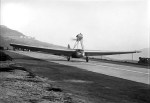 Savoia-Marchetti S.64 and S.64 bis - The Savoia-Marchetti S.64 was an Italian aircraft designed to set distance and endurance records. In 1928, the aircraft set a record for flying 4,763.82 miles (7,666.62 km) nonstop from Italy to Brazil.
Savoia-Marchetti S.64 and S.64 bis - The Savoia-Marchetti S.64 was an Italian aircraft designed to set distance and endurance records. In 1928, the aircraft set a record for flying 4,763.82 miles (7,666.62 km) nonstop from Italy to Brazil. Savoia-Marchetti S.65 Schneider Racer - The unorthodox Savoia-Marchetti S.65 was intended to win the 1929 Schneider Trophy Race for Italy. Unfortunately, the aircraft crashed and took the life of Tommaso Dal Molin.
Savoia-Marchetti S.65 Schneider Racer - The unorthodox Savoia-Marchetti S.65 was intended to win the 1929 Schneider Trophy Race for Italy. Unfortunately, the aircraft crashed and took the life of Tommaso Dal Molin. Wedell-Williams Model 45 Racer - The Wedell-Williams Model 45 Racer had the potential to be a record-setting aircraft. However, the unrelated deaths of several people involved with the aircraft prevented it from being fully developed.
Wedell-Williams Model 45 Racer - The Wedell-Williams Model 45 Racer had the potential to be a record-setting aircraft. However, the unrelated deaths of several people involved with the aircraft prevented it from being fully developed. Williams Mercury Seaplane Racer (1929) - The Williams Mercury Racer was a privately funded aircraft slated to compete in the 1929 Schneider Trophy Contest. Due to being very overweight, the finished racer was unable to takeoff.
Williams Mercury Seaplane Racer (1929) - The Williams Mercury Racer was a privately funded aircraft slated to compete in the 1929 Schneider Trophy Contest. Due to being very overweight, the finished racer was unable to takeoff.